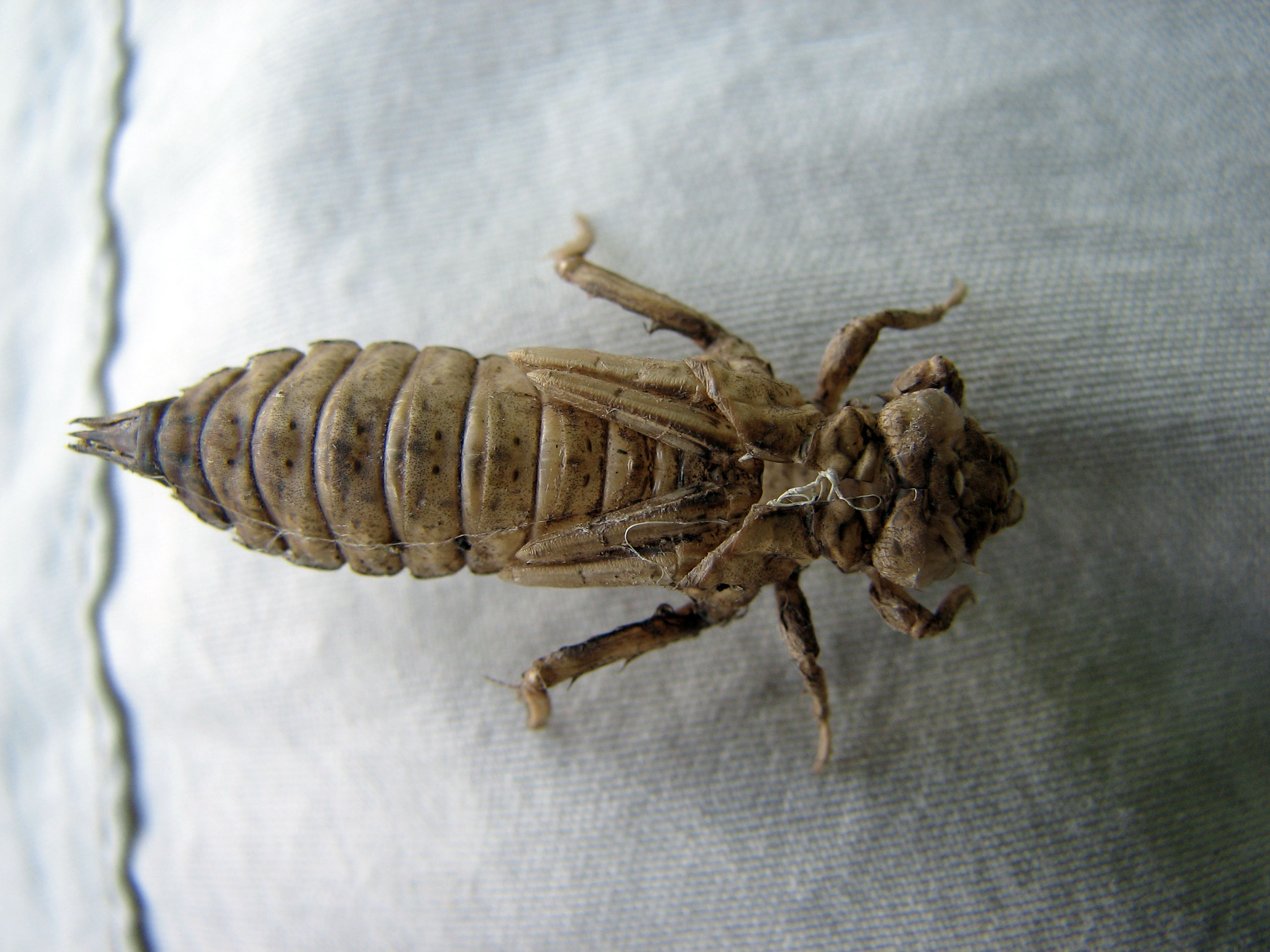Reproduction
The St. Croix Snaketail, like other
insects, is a diecious organism.
The males initiate mating by searching a small
stretch of river in search of a mate.
Once a mate is found, the actual mating process for
has been reported to occur while perched on vegetation close
to their river.
After mating, the female uses the current of the river to
disperse her eggs, which form aggregations.
The discoverers of this species found that the eggs
of the St. Croix Snaketail are found mixed in with those of
other snaketail species (Vogt and
Smith 1993).
When the larvae hatch, they stay in the stream for a
year before they become fully mature.
In their second year (when they mature), they crawl
up on land and molt into their adult forms.
Pictured below is a molted exoskeleton, or exuviate, of
Ophiogomphus susbehcha. Information
courtesy of The Minnesota DNR.
